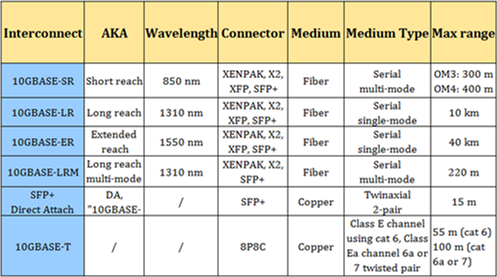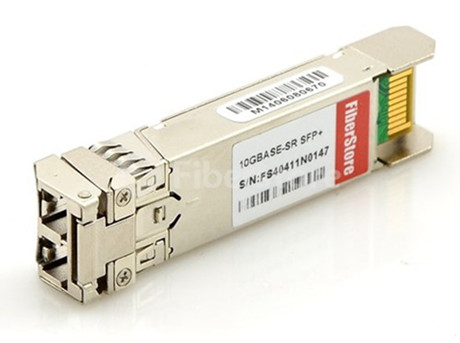Cat 5e or cat 6 cables now are the mainstream of the copper network solution, but optical technology are progressing to promote higher category copper cables for the increasingly heavy-loaded data center solution. Cat 8 cables lately has been much talked about, especially after the TIA category 8 cabling standard approved. Category 8 is regarded as the next-generation twisted-pair cabling specification for higher data rate, but it is still under development. Here is what we need to know about the basics of Cat 8 cabling.
Main Features of Category 8 Standard
Cat 8 cable is especially designed to support 25G or 40G Ethernet data rate with a link distance of up to 30 meters, which is sufficient for most switch-to-server connections for top-of-rack (ToR), middle-of-row (MoR) or end-of-row (EoR) topologies. In addition, category 8 cabling is fully backward compatible with category 6A cabling, including RJ45 connectivity, and supports all Category 6A applications such as 10GBASE-T for a distance of 100 meters.

Category 8 cabling and components are specified with transmission performance of up to 2 GHz (four times the bandwidth of Category 6 cabling and two times the bandwidth of category 7) with more stringent alien crosstalk requirements. Meeting these requirements requires a shielded cabling system (F/UTP, S/FTP or F/FTP), just as seen in the above picture. What’s more, the cat 8 cables do not need more power to operate over shorter distances for 25GBASE-T/40GBASE-T application. The power needed to transmit a signal 30 meters at 40 Gb/s is approximately the same as the power needed for 10GBASE-T transmission for distances up to 100 meters.
How to Compare Category 8 to Those of Previous-Generation Twisted-pair Cabling Systems—Category 5, 6, 6A, 7, 7A?
The cat 5e cables was introduced in 1999 with the use of 100-meter, 4-connector channel in structure cabling. The primary differences between category systems is the frequency at which the signal is transmitted over the cable. Cat 6 cables are designed to support 10Gbqs with a frequency of 500 MHz. While Category 7/7A as n advanced version of cat 6 cables offers a 100-meter 4-connector channel using shielded cabling, and has been designed to transmit signals at a frequency of 1000 MHz. Even though Category 7/7A operates at the higher frequency, there is no corresponding improvement in data rate over Category 6A because 10GBase-T is still the fastest twisted-pair-based data rate recognized by IEEE 802.3.
The cat 5e cables was introduced in 1999 with the use of 100-meter, 4-connector channel in structure cabling. The primary differences between category systems is the frequency at which the signal is transmitted over the cable. Cat 6 cables are designed to support 10Gbqs with a frequency of 500 MHz. While Category 7/7A as n advanced version of cat 6 cables offers a 100-meter 4-connector channel using shielded cabling, and has been designed to transmit signals at a frequency of 1000 MHz. Even though Category 7/7A operates at the higher frequency, there is no corresponding improvement in data rate over Category 6A because 10GBase-T is still the fastest twisted-pair-based data rate recognized by IEEE 802.3.
Category 8 is a significant departure from previous systems in that it uses a frequency of 2000 MHz, and is limited to a 30-meter 2-connector channel. Unlike Category 5e or Category 6A, which could use either unshielded twisted-pair (UTP) or shielded cable construction, Category 8 will require shielded cabling. The most likely cable construction for Category 8 will be 22-AWG S/FTP cabling. Category 8 is also unique in that the ISO standard will recognize two different classes of product. Class I is based on the traditional RJ45 connector, while Class II will accept non-RJ45 connectors similar to Category 7/7A. While both solutions will offer backward compatibility in terms of transmitting the lower category data rates (1G or 10G), the Class I solution offers a migration path using the RJ45 connector platform. For example, a customer might install a Category 8 jack-to-jack link now, but continue to use Category 6A patch cords until the active equipment is upgraded.
Given Category 8’s Capabilities, Where Is It Most Likely to be Deployed?
Category 8 cabling is designed to support emerging IEEE 25GBase-T and 40GBase-T needed as server-to-access-switch interconnect applications. This need has been identified and available, or under development, over optical fiber links for longer reach (up to 500 meters), or twinax links for short reach (up to 7 meters).

The opportunity for balanced twisted-pair as a cost-effective viable media option for the intermediate distance needs between 5 and 30 meters, sufficient to serve 20 cabinets or racks in a data center, led to the initiation and development of both the IEEE 802.3 application standards and the associated TIA as well as ISO/IEC Category 8 cabling standards.
How to Install Category 8 Cables?
Category 8 will be a shielded, field-terminable, and with a very high bandwidth. Thus there to be at least some improvements made to how jacks are terminated in the field to both meet this new bandwidth and to ensure a good bond with the shield. Additionally, contractors must make sure that the cable is properly grounded. If the connector companies do their job right, grounding the Category 8 cables and connectors will be a seamless process for the installer, which is all based on the RJ45 connector. Any component qualified as a Category 8 component will also meet requirements specified for Category 6A and lower components.
Conclusion
Cat 8 product recently is not available on the market now, but it is believed that in the near future cat 8 related items will be ubiquitous. Cat 8 cabling are meant to support 25GBASE-T and 40GBASE-T specifications, which will greatly propel the development of 25G and 40G network. FS.COM will continue our efforts to stay in close touch with the latest technology and bring you the best products and services. We provide plenty of Cat 5/cat 6/ cat 7 components to meet your special requirement. Besides the copper cables, we also have the fiber optic cables terminated with several connectors like SC fiber patch cord, fiber patch cables LC to LC, LC to LC patch cord and so on. If you want to know more about our products, please sens your request to us.





